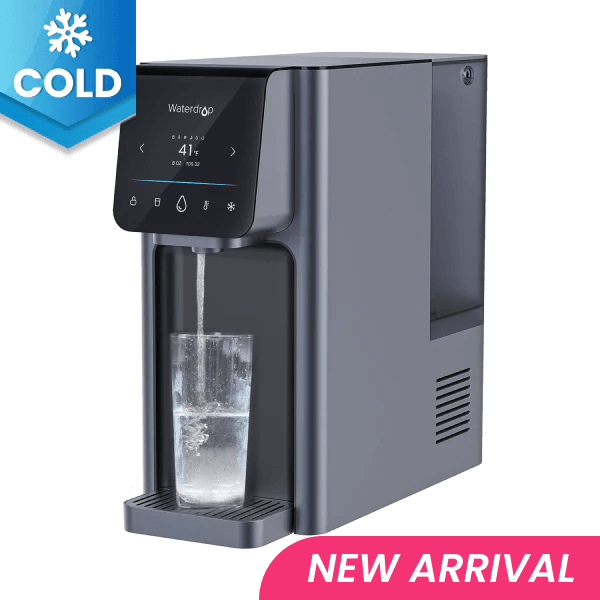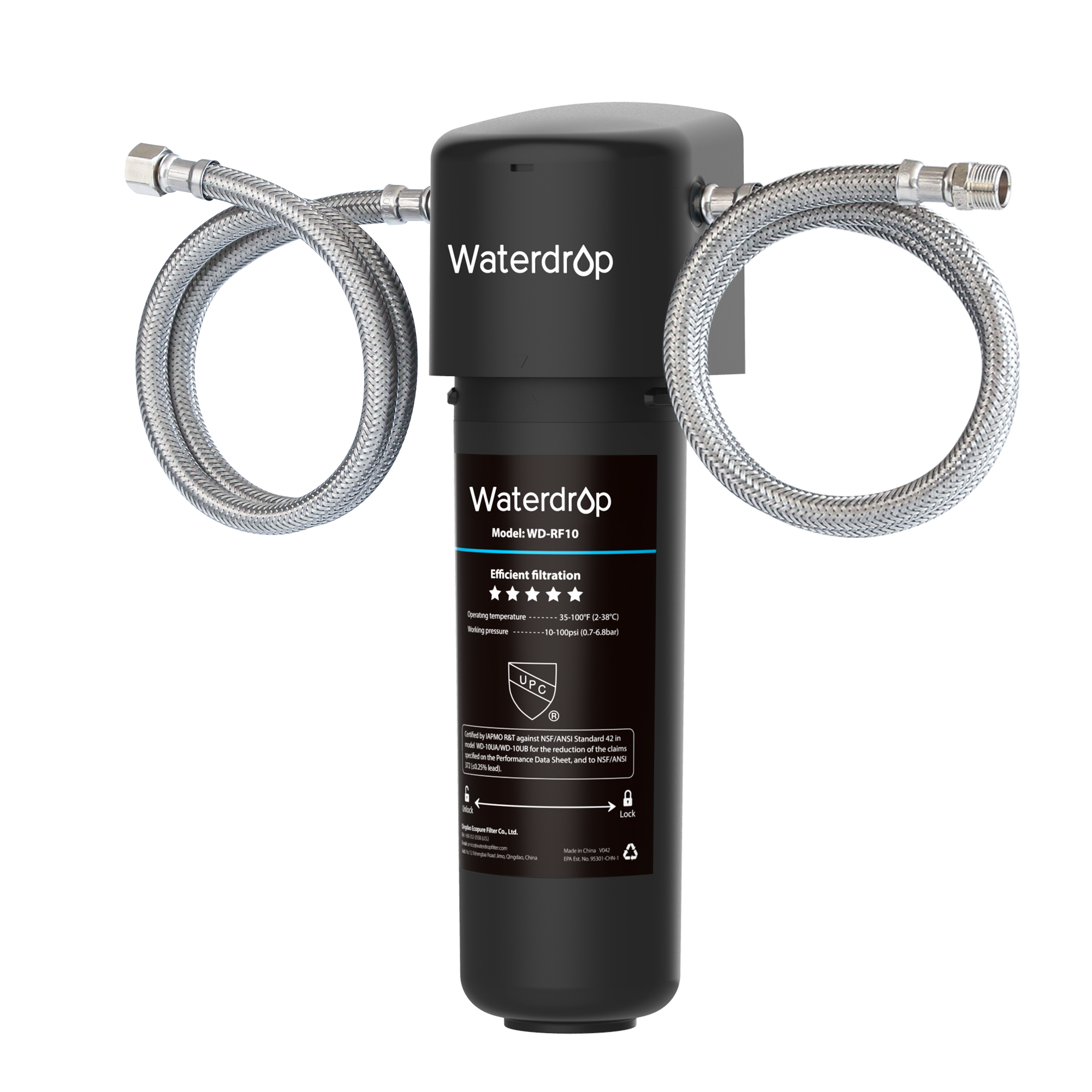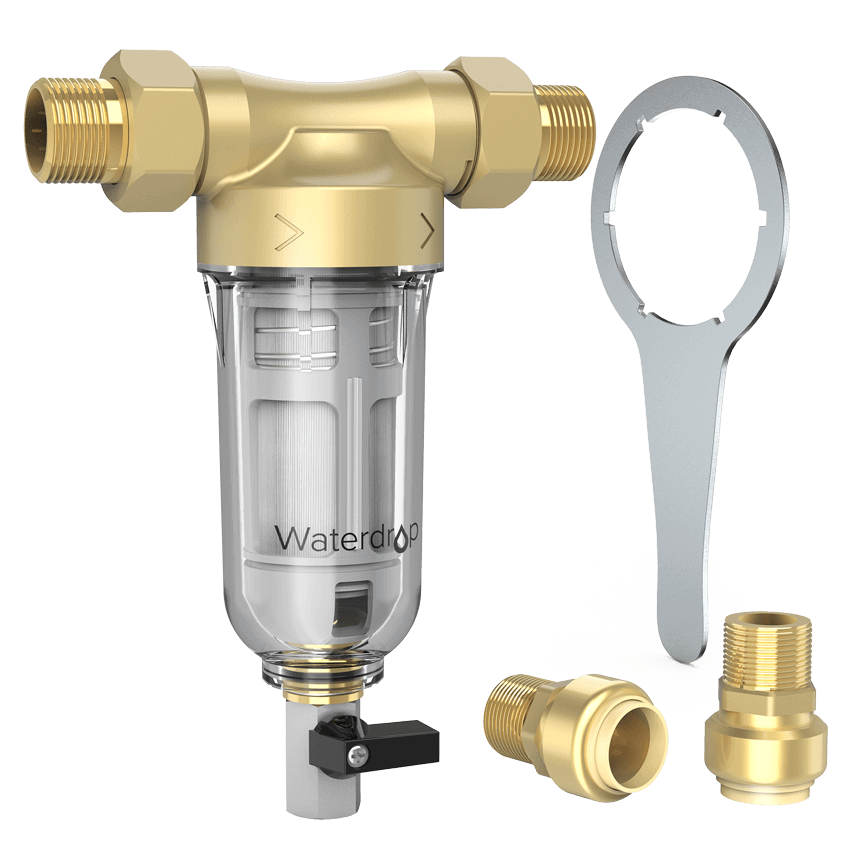Should You Drink Reverse Osmosis Water?
by Dr. Jonathan Doyle - Updated May 27, 2022
The importance of water in our everyday lives cannot be overemphasized. You and your family need a regular safe, and clean water supply to stay healthy. Fortunately, you can reduce the most harmful impurities in your source water with reverse osmosis water systems. But should you really drink reverse osmosis water? Let’s find out together.
Reverse Osmosis Explained
The first step in understanding the RO process is to know what osmosis is all about.
What Is Osmosis?
Osmosis is the natural diffusion or passage of molecules of water or other solvents through a semi-permeable membrane. This movement also prevents the movement of dissolved substance molecules through the same membrane. The first in-depth study on reverse osmosis was done by Wilhelm Pfeffer, a German plant physiologist, in 1877.
The process of osmosis is naturally spontaneous. That is why it is vital in biology and several other fields of science. For example, if you have weaker and strong saline solutions and osmosis occurs, the weaker solution will move towards the stronger saline solution. The absorption of water from the soil by plant roots is an example of osmosis in nature. The absorption of water from the blood by human kidneys is another example.
What Is Reverse Osmosis?
Reverse osmosis (RO) is a technology designed to eliminate most contaminants in the source water. It achieves this by forcing the water molecules through a semi-permeable membrane under high pressure. This method is more efficient and easier, providing contaminant-free water at the end of the process. In addition, it offers a more economical alternative to getting clean water compared to buying bottled water.
Are Osmosis and Reverse Osmosis the Same?
No, they are not. There is a difference between osmosis and reverse osmosis. For instance, the freshwater in osmosis passes through the semi-permeable membrane to reduce the concentration of the stronger solution. Conversely, pressure is needed in reverse osmosis to force the concentrated aqueous solution and water molecules through the semi-permeable membrane and towards the freshwater.
The major difference here is that the movement or diffusion is from higher to lower water potential in osmosis. However, the diffusion is against the potential gradient in the case of reverse osmosis. In both cases, the diffusion occurs across a semi-permeable membrane.
The Working Principle of RO Systems
The reverse osmosis technology works continuously by using pressure to push molecules of source water through a thin, semi-permeable membrane. The passage or push separates the source water into pure water molecules and impurities. The process is a reversal of the principle of osmosis, which is the flow of water molecules from lower to higher salt concentrations via a semi-permeable membrane.
The RO process requires applied pressure to overcome the osmotic pressure, which forces the source water to move to the low concentration side from the high concentration side. The passage is such that only the molecules of pure water move through to the low concentration side - the membrane effectively traps the impurities leaving us with only pure water.
What Are the Contaminants an RO System Can Remove?
The reverse osmosis water filtration system can effectively remove up to 99% of contaminants present in water, including chlorine and fluorine, lead, arsenic, cadmium, barium, radium, and chromium. It also eliminates sulfates, nitrates, and other salts. RO systems are also effective against total dissolved solids (TDS), herbicides and pesticides, volatile organic compounds (VOCs), parasites, heavy metals, rust, dirt, and sediments.
Why Should You Drink RO Water?
Water filtration has been around for a while. It provides individuals and families with cleaner water from unclean water sources. However, there has been improvement and modifications to the system over time, all intended to make it more convenient and efficient. For example, we now have the reverse osmosis water filtration method, ceramic filtration, carbon filtration, and ultraviolet filtration.
Unlike other water filtration methods, the reverse osmosis water filtration method is more efficient at transforming unclean water to clean and pure drinking water. The technique uses a semi-permeable membrane to eliminate contaminants from drinking water. The high efficiency of RO filtration has been proven repeatedly, likewise its effectiveness against dissolved salts and toxins in the water.
In addition to removing most contaminants from the source water, the RO filtration system can also:
- Reduce the amount of dissolved harmful chemicals in the source water.
- Be a source of clean water when treated water is unavailable or scarce.
- Get rid of foul odors and tastes from the original water.
You can easily install and maintain most reverse osmosis water filter systems. You only have to connect it to your existing water supply. Overall, it helps you save more money compared to buying bottled water.
Waterdrop 800GPD RO System with UV Sterilizing Light
The Waterdrop 800GPD RO system is ideal for homeowners looking for a reliable source of RO water at home. It is the much-improved and upgraded version of the Waterdrop G3. Therefore, it is more equipped to meet the water needs of even large households and small businesses. Now you can enjoy purer and better-tasting water, courtesy of advanced filtration technology. The inbuilt water-saving technology also helps save 12x more water.
Better Filtration and Improved Materials
The Waterdrop 800GPD has an efficient three-stage filter setup, which combines with a water scale inhibitor to remove impurities and keep away scales from your water appliances. There is also an improved seven-layer RO membrane system that effectively reduces heavy metals, chlorine, and other contaminants you find in the water.
Modern and Safer LED UV Sterilizer
This RO system is equipped with an advanced LED chip that ensures a 99.9% removal rate of viruses and bacteria found in the source water. In addition, while the mercury-vapor lamp releases heavy metals and other harmful toxins into the filtered water, the breathing lamp here does not. Instead, it turns on when water passes and goes off when there is no passage. This helps to save energy.
Energy-Efficient, Low-Drain Ratio
The breakthrough water-saving in the Waterdrop 800GPD ensures a 3:1 drain ratio - one of the lowest out there. Therefore, you can contribute to keeping the earth safe and healthier while keeping your water bill low.
Faster Flow and Extended Filtration Capacity
This RO water filter system comes with an ultra-large filtration capacity of 800 gallons per day. So, you can rest assured it will meet the needs of even big households and small businesses. Thanks to its faster water flow, it takes just six seconds to fill a cup with water. Now you get pure water without waiting.
Remineralization Filter (Optional)
If you opt for the remineralization filter alongside this unit, then you can get remineralized water that is tastier and healthier. In addition, the remineralization filter ensures the purified water does not lack the relevant trace minerals, which makes the water more enjoyable.
Real-time Water Quality
You can monitor the TDS values and lifespan of the filter with the inbuilt smart indicator in this water filter. Never miss your replacement dates again!
Ideal for Businesses and Homes
You can get this reverse osmosis system for use in your offices or homes. It is suitable for gyms, restaurants, clinics, offices, cafes, and other corporate spaces.
Small-Sized, Easy to Install
The compact size of this tankless RO system means it requires only a little space to sit. You are not sacrificing your entire under-sink space. Also, you can easily install and replace the system and its components.
Final Words
You and your family are better off with safe, healthy, remineralized RO water for drinking. Getting the right RO system is the first step in this direction. These systems can efficiently remove most contaminants in your source water. It gets even better if you introduce a remineralization filter that ensures the important trace minerals remain in your drinking water.
































































